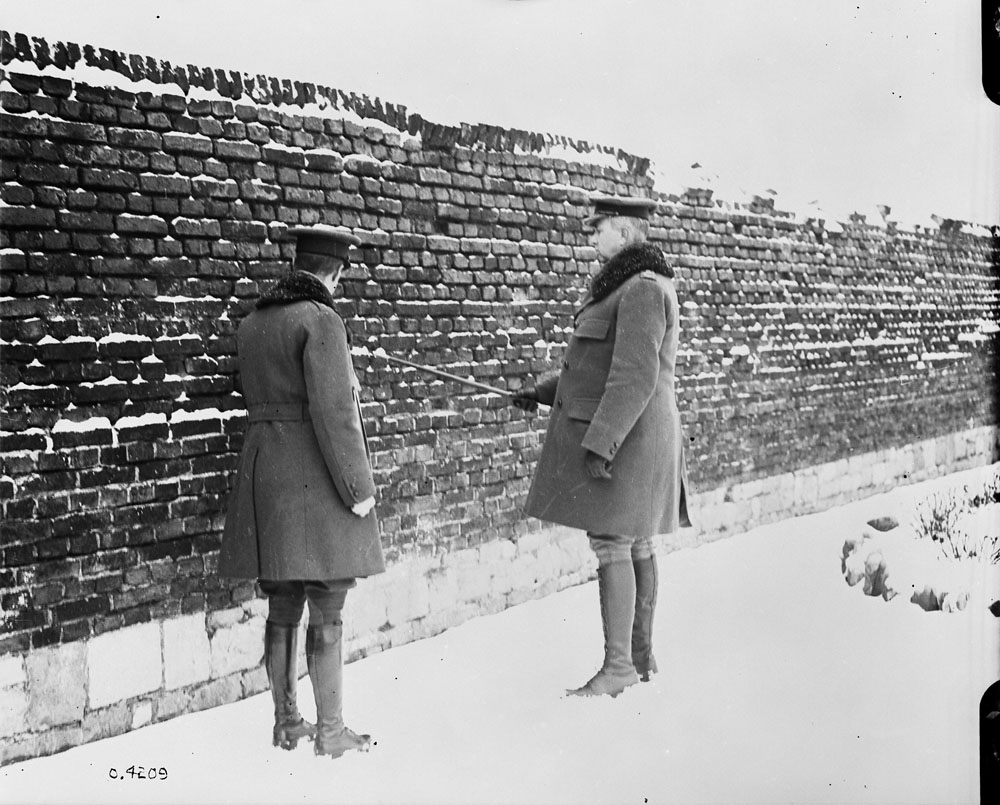Andenne
On Friday, 31 January 1919, Sir Arthur Currie addressed Canadian troops regarding mobilization in the town square of Andenne, Belgium. Currie, along with troops of the 1st and 2nd Canadian Divisions had recently returned from the Allied Occupation of Germany.

Though Canadian participation short-lived, the occupation lasted exactly ten years to the day Currie had led troops across the Rhine river at Bonn on 13 December 1918.

At 14h30 on Friday, 31 January 1919, Currie addressed the troops. In the morning, Currie had took time before his address to visit the scene where 200 Belgians had been executed against a wall during the first month of the Great War. The story of that time presented in Sir Arthur Currie Visits Andenne.
Sir Arthur Currie Visits Andenne Cemetery
Elsewhere Friday, 31 January 1919
Canadian soldiers continued to die from their wounds or influenza. On 31 January 1919, three soldiers in Canada succumbed to their wounds, along with another five in England. Many troops still awaiting return to England.
Private Cecil Eley Westland
Private Cecil Eley Westland 2022375 the only Canadian soldier to die in France on this day. Cecil had been admitted to Camiers Hospital on 6 November 1918 (GSW fingers). Tragically, he developed bronchial pneumonia/influenza and died later on 31 January 1919.
Pte Westland buried at Etaples Military Cemetery Plot LXXII, Row A, Grave 37.

Private Percy Clitheroe
Two soldiers died in Belgium. Like most sldiers during this time, Private Percy Clitheroe 761044 died of bronchioal pneumonia/influenza.
Pte Clitheroe buried at Huy (La Sarte) Communal Cemetery, Plot I, Row B, Grave 3.

Private Florian Filiatreault
Pte Florian Filiatreault 3155994 also died of pneumonia/influenza and buried at Belgrade Cemetery, Plot V, Row A, Grave 4.
Namur attacked by the Germans on 20 August 1914. The forts destroyed by heavy artillery, and at midnight on 23-24 the garrison evacuated. The town then remained in German hands until the end of the war.
Belgrade Cemetery contains 249 Commonwealth burials of the Great War, most of them dating from the ten months when casualty clearing stations then posted to Namur after the Armistice.
The Battle of George Square
The Battle of George Square a violent confrontation in Glasgow, Scotland between City of Glasgow Police and striking workers, centered around George Square. Also known as “Bloody Friday” or “Black Friday”, it took place on Friday, 31 January 1919.

During the riot, the Sheriff of Lanarkshire called for military aid, and British troops, supported by six tanks, moved to key points in the city. The strike leaders arrested for inciting the riot. Although often stated no fatalities, one police constable died several months later from injuries received during the rioting.
Later
Gunner Wells of the 2nd Heavy Battery one of the few Canadians to have married a Belgian national during demobilization. However, his true identity remains a mystery.

He was not an original member of the unit, nor was there a ‘Wells’ fitting his description among the CFA. Likely, a misspelling of his last name. Unfortunately, the 2nd Heavy Battery war diary concluded in January 1919.

Do you know the true identity of Gunner Wells?
Please Contact CEFRG
More
- Home of CEFRG
- Blog
- CEFRG on FaceBook
- CEFRG on YouTube
- Soldiers and Nursing Sisters
- Units (Brigades, Battalions, Companies)
- War Diary of the 18th Battalion (Blog)
- 116th Battalion CEF – The Great War
- Les Soldats du Québec Morts en Service
- Cape Breton Military History Collections
- Montreal Aviation Museum
- Battles of the Great War
- Cases
- Cemeteries
- Memorials
- On This Day
- About CEFRG
